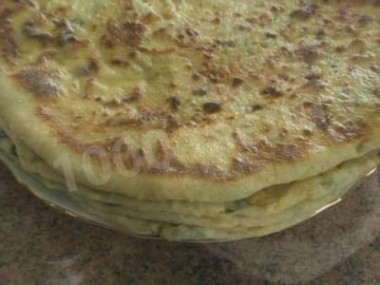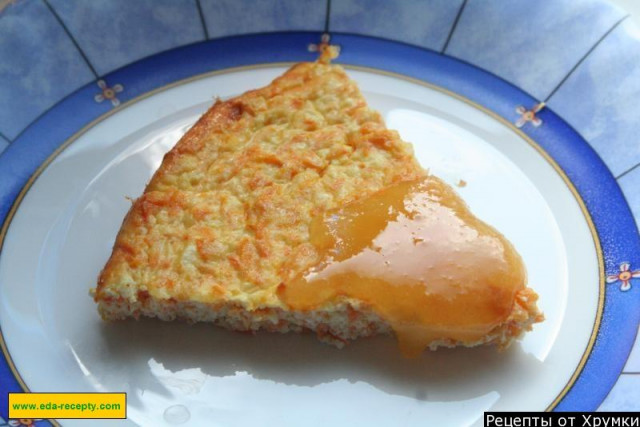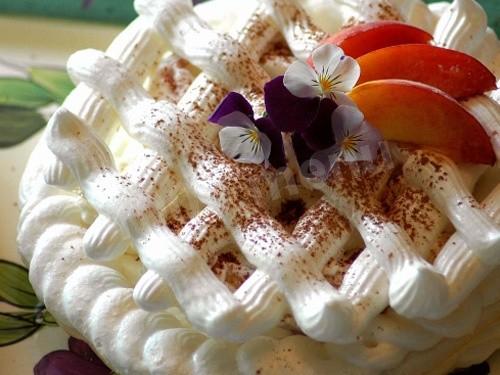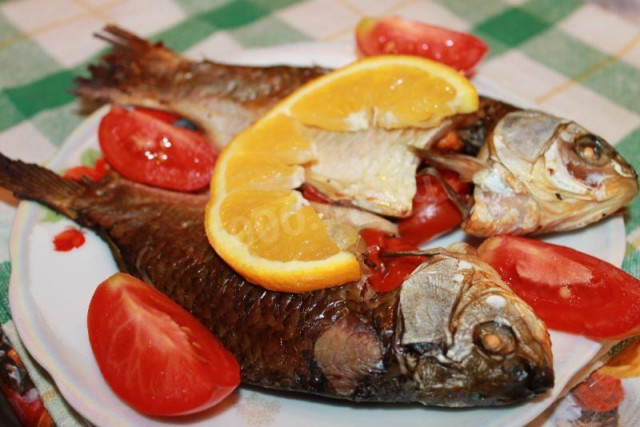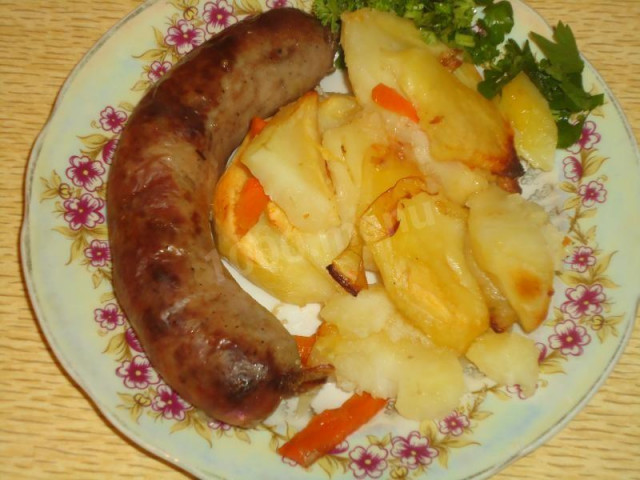Composition / ingredients
Cooking method
Ossetians have been baking their traditional pies with various fillings for thousands of years. The name of the Ossetian pie depends on the type of filling. Usually they are baked in three pieces and stacked. I propose to bake ualibakh – an Ossetian pie with cheese, the culinary recipe of which I brought from an Ossetian summer vacation. Fresh yeast (you can take a pack of dry ones) is diluted with 100 ml of warm water, add granulated sugar, mix well and wait for it to start rising. Put salt and sugar in the remaining warm water according to the recipe and pour in the sourdough. Mix everything and gradually pour in the sifted flour. Knead the dough for the pie, then lubricate it with vegetable oil, cover it with a towel and let it rise for two hours. We begin to prepare the cheese filling. The secret of Ossetian pies: the filling should be the same as the dough. The finished dough is divided into 3 balls, with a diameter of about 15 cm. We roll the ball into a circle of dough of about 25 cm. The dough for the Ossetian pie should be rolled out very thinly. We put the filling of the cheese cut into pieces on the cake blanks, pre-filling it. Evenly distribute the filling. We collect the edges of the dough to the center, fix it and carefully turn the pie over, leveling the filling from the edges. It is not necessary to stretch very much. We spread the pie on a wide frying pan, greased with margarine, and stretch it along its diameter. The average diameter of Ossetian pies is 30-35 cm . In the center of the pie we make a hole for the air outlet. Bake the pies in the oven, preheated to 200 degrees, and first bake on the bottom shelf for 5 minutes, then move to the top shelf for 20 minutes, until browning. After baking, we smear the top and edges of the pies with a piece of butter (about 50 g), if all the oil is not absorbed, then leave it in the center so that it melts and impregnates the filling. Ossetian cheese pie is ready! Having tried it once, you will fall in love with Ossetian food forever!
Calorie content of the products possible in the composition of the dish
- Dutch cheese - 352 kcal/100g
- Swiss cheese - 335 kcal/100g
- Russian cheese - 366 kcal/100g
- Kostroma cheese - 345 kcal/100g
- Yaroslavsky cheese - 361 kcal/100g
- Altai cheese 50% fat content - 356 kcal/100g
- Soviet cheese - 400 kcal/100g
- Cheese "steppe" - 362 kcal/100g
- Uglich cheese - 347 kcal/100g
- Poshekhonsky cheese - 350 kcal/100g
- Lambert cheese - 377 kcal/100g
- Appnzeller cheese with 50% fat content - 400 kcal/100g
- Chester cheese with 50% fat content - 363 kcal/100g
- Edamer cheese with 40% fat content - 340 kcal/100g
- Cheese with mushrooms of 50% fat content - 395 kcal/100g
- Emmental cheese with 45% fat content - 420 kcal/100g
- Gouda cheese with 45% fat content - 356 kcal/100g
- Aiadeus cheese - 364 kcal/100g
- Dom blanc cheese (semi-hard) - 360 kcal/100g
- Lo spalmino cheese - 61 kcal/100g
- Cheese "etorki" (sheep, hard) - 401 kcal/100g
- White cheese - 100 kcal/100g
- Fat yellow cheese - 260 kcal/100g
- Altai cheese - 355 kcal/100g
- Kaunas cheese - 355 kcal/100g
- Latvian cheese - 316 kcal/100g
- Limburger cheese - 327 kcal/100g
- Lithuanian cheese - 250 kcal/100g
- Lake cheese - 350 kcal/100g
- Gruyere cheese - 396 kcal/100g
- Pressed yeast - 109 kcal/100g
- Granulated sugar - 398 kcal/100g
- Sugar - 398 kcal/100g
- Butter 82% - 734 kcal/100g
- Amateur unsalted butter - 709 kcal/100g
- Unsalted peasant butter - 661 kcal/100g
- Peasant salted butter - 652 kcal/100g
- Melted butter - 869 kcal/100g
- Table margarine - 720 kcal/100g
- Cream margarine - 720 kcal/100g
- Milk margarine - 743 kcal/100g
- Low-fat margarine - 384 kcal/100g
- Margarine sandwich - 688 kcal/100g
- Margarine for baking - 675 kcal/100g
- Margarine dietary - 366 kcal/100g
- Margarine bold 40% - 415 kcal/100g
- Margarine - 720 kcal/100g
- Salt - 0 kcal/100g
- Water - 0 kcal/100g
- Wheat flour - 325 kcal/100g


